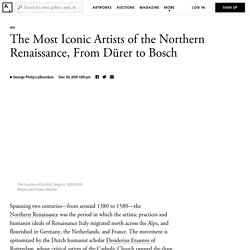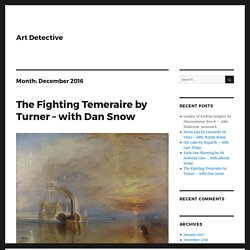

Renaissance Watercolours: materials and techniques. Twitter. Hans Holbein’s “Ambassadors” Is a Masterpiece of Hidden Symbolism. Prior to his appointment in the king’s court, the artist had established a reputation in his native Germany for religious paintings (his father was the renowned Late Gothic painter ); and in Basel, Switzerland, he was known for woodcut illustrations.

Notable among Holbein’s woodcuts were illustrations for the Dutch scholar Erasmus’s satirical essay “The Praise of Folly” and the title page to Martin Luther’s German translation of the Bible. Until he arrived in England, the artist had barely ever dabbled in secular portraiture, a new form of painting that emerged in the . Somehow, his previous activities and affiliations didn’t arouse suspicion in the English court; Holbein retained the king’s favor until his death. Henry’s drastic actions in breaking away from the Church, largely motivated by his desperation to produce a male heir, threw a wrench into Europe’s already unstable political and religious order.
Collections Search. 'Van Eyck from home' - a wonderful online exhibition resource. This is a must see vid, quite amazing and thoroughly enjoyable! What a find and amazing research! The story is mesmerising.… ‘It would be fascinating to know what the Flemish weavers made of it all’ – on Raphael's tapestries in the Vatican. Almost the entire oeuvre of Jan van Eyck is now accessible online on including the miniatures in Turin-Milan Hours.
“It was the first time I saw black people in the 17th century painted by a Dutch master looking proudly back at me,” said the curator Stephanie Archangel. Adoration of the Trinity by Albrecht Durer.… Burlington Magazine sur Twitter : "On the 1st day of 12 DAYS, we give you 12 preserved panels. The 15th instalment in our Art of Conservation series looks at the preservation of one of the art world’s most infamous pieces, The Ghent Altarpiece. Enjoy the. Youtube. The Northern Renaissance. While Dürer transformed Biblical scenes with Renaissance style, infused them with fantasy.

His most famous work, The Garden of Earthly Delights (1505–15), combines alternately comic and demonic vignettes into grotesque landscapes. A triptych, it depicts a progression of human sin across three panels, with the Garden of Eden at left, the imperfect human world at center, and the horrors of Hell at right. Each group plays out its own scene of gluttony, debauchery, and other fleshly transgressions. One scene (right panel, left side, bottom third) imagines sonic retribution for those who, in life, used music as a means of seduction and temptation. Instruments here —harp, lute, hurdy-gurdy—have been transformed into huge instruments of torture. Episodes & Images. I've always thought that the expansion of 19th century London must have been a real sight to behold.

It was increasing by leaps and bounds, becoming, by the mid-point of the century, the largest city in the world. London in the 19th century had political and religious freedoms, making it a stable alternative to many other countries in the world and it was flooded with immigrants. Its economy was robust, and London’s positioning as a port city only served to enhance its commitment to industries like trade, shipping, and fishing. As such, London became the place, along with America, for people the world over to begin their fresh starts. But that isn't to say that 19th century London was all roses. Much was made of the so-called “criminal classes” at this time. Or are we? In this first half of our special two-part Halloween episode, we are going to delve into a theory that identifies Jack the Ripper as the English painter Walter Sickert. A radical new look at the greatest of Elizabethan artists.
Working at Waddesdon Manor brings many surprises. I should be used to the range and richness of Rothschild collections, but I never expected to encounter two masterpieces here that are almost certainly by the English artist Nicholas Hilliard (1547–1619). Even less, that these two paintings would turn out to transform our understanding of his work.
Queen Elizabeth I (1533–1603) (1576–78), attributed to Nicholas Hilliard. Rothschild Family/Photo: © Hamilton Kerr Institute Queen Elizabeth I and Sir Amias Paulet are on loan to Waddesdon from a Rothschild family collection and will be the focus of a special display from 7 June. Hilliard Portraits; a discovery? View this week’s image here.

Producer: Dan Morelle Subscribe, rate and review on iTunes and follow Janina on Twitter. Follow History Hit on Facebook, Instagram and Twitter. Please share this episode on Twitter and Facebook. Podcast: Play in new window | Download Subscribe: iTunes | Android | View this week’s image here. Podcast: Play in new window | Download View this week’s image here.
Deconstructing Myths about the Nude in Renaissance Art. Madonna and Child Surrounded by Angels (detail), 1454–56, Jean Fouquet.

Oil on panel, 36 1/4 x 32 7/8 in. Courtesy of Koninklijk Museum voor Schone Kunsten Antwerpen. Image © www.lukasweb.be–Art in Flanders vzw, photo Dominique Provost Images of the naked human body provoke conflicting feelings: shame, admiration, curiosity, desire, disgust, anger. This is especially true when these images appear in public spaces, whether physical or virtual.